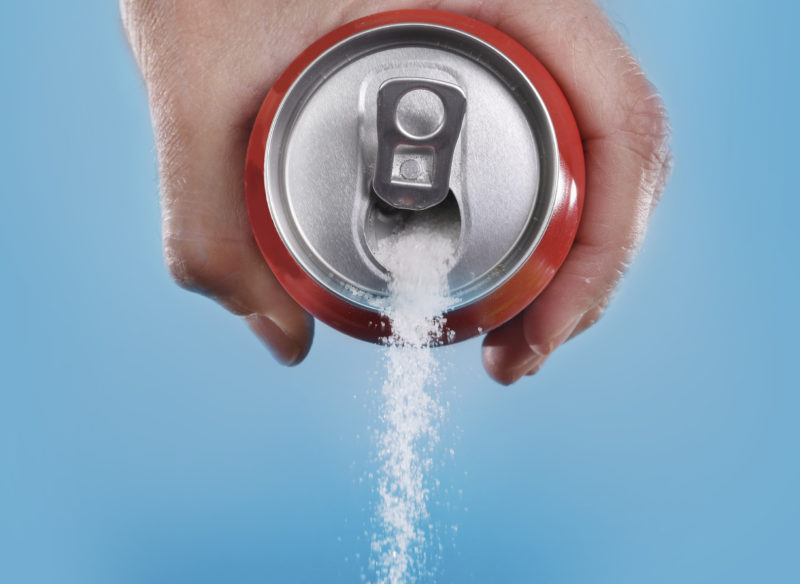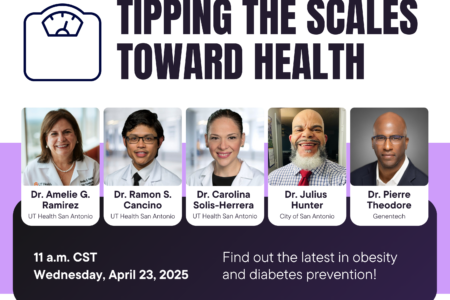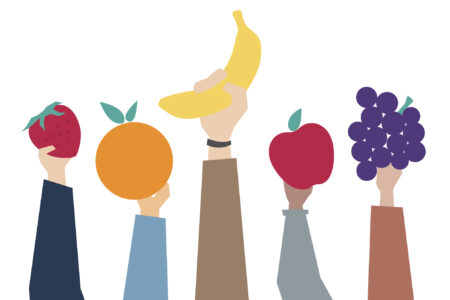
Share On Social!
This is part of our Sugary Drinks & Latino Kids: A Research Review »
Introduction
Americans obtain over 40 percent of their total sugar in the form of sugar-sweetened beverages (SSBs), including soda, sports and energy drinks, and fruit drinks that contain less than 100 percent juice.
Young Americans—including young Latinos—drink far more of these beverages than they did a few decades ago.1
Further, as young Americans’ consumption of soda, fruit drinks, and other SSBs has increased, their consumption of white, unsweetened milk has decreased at the same time.2
Cross sectional studies have shown that children’s milk intakes are inversely associated with intakes of SSBs, including juice drinks and soda, as early as 2 years of age.3,4 This trend is particularly concerning, as SSBs displace healthier beverages that naturally provide young children with essential nutrients and impact overall dietary quality.4
In efforts to reduce SSB consumption among children and adolescents, a variety of interventions have been proposed.
These include: policies limiting the availability and promotion of SSBs in school and child care settings; regulatory and voluntary measures to limit the marketing of SSBs to children; and pricing incentives, (e.g., exempting healthier beverages such as bottled water from state sales taxes and/or subsidies for purchases of healthier beverages) and pricing disincentives (e.g., levying significant excise taxes on SSBs).
This research review examines:
- Current SSB consumption patterns in the general population, among youth, and among Latino children in particular, with a special emphasis on early childhood (i.e., ages 5 and younger).
- Evidence on the link between SSB consumption, obesity, and health.
- The extent of beverage company marketing efforts and any evidence of marketing specifically targeting Latinos.
- Availability and promotion of SSBs and other beverages in school and child care settings and policies that govern these practices.
- Evidence on the impact of pricing on SSB consumption and weight outcomes.
- Evidence around water consumption, accessibility, and affordability.
Methodology
In 2012, Salud America! researchers developed a research review focusing on the SSB consumption among Latino youth and the impact of pricing on consumption and weight outcomes.
Their initial literature search was conducted in PubMed, GoogleScholar, and Google using combinations of keywords that included “sugar sweetened beverages” AND “Latino,” “Hispanic,” “youth,” and “adolescents.” Further searching targeted economic aspects, by using terms such as “financial incentives” or “pricing” AND “sugar-sweetened beverages.” Additional documents related to current events and policies were found using the term “soda tax.” A further search was made using “pricing” AND “healthy beverages.”
The initial search resulted in approximately 35 peer-reviewed papers and other articles. Researchers also examined reports from the Institute of Medicine and the Economic Research Service of the U.S. Department of Agriculture. References in all articles reviewed led to a search for additional specific papers. Researchers also incorporated studies identified as part of a recent systematic review of research on food and beverage pricing conducted between January 2007 and March 2012, which included searches from the above databases and others.2 This approach produced a review of existing evidence on the impact of SSB taxes and prices on SSB consumption and obesity.
In 2015-16, researchers from Bridging the Gap, a research program dedicated to understanding how policies and environmental factors influence diet, physical activity and obesity among youth, expanded on the existing research review by searching specifically for any additional evidence published in English between January 2012 and May 2016, as well as any evidence from the past 10 years specific to SSB consumption in early childhood and around policies and regulations related to beverages in child care settings.
Literature searches were conducted using a combination of the terms “beverages” (excluding alcoholic beverages) AND “Latino,” “Hispanic,” “Mexican American,” or “Puerto Rican.” Additional searches incorporated the terms “child,” “infant,” “toddler,” “child care,” “daycare,” “Head Start,” “preschool,” “kindergarten” or “Child and Adult Care Food Program.”
After filtering the resulting list of papers through inclusion criteria, this yielded over 40 additional peer-reviewed journal articles and other papers that were considered relevant for incorporation into the research review. Additional references were identified and incorporated following the peer review process.
More from our Sugary Drinks & Latino Kids: A Research Review »
- Introduction & Methods (this section)
- Key Research Finding: Latino kids’ sugary drink consumption
- Key Research Finding: Weight gain
- Key Research Finding: Marketing
- Key Research Finding: Childcare settings
- Key Research Finding: Pricing
- Key Research Finding: Water
- Policy Implications
- Future Research Needs
References for this section »
1. Dietary Guidelines for Americans, 2010. (U.S. Department of Agriculture & U.S. Department of Health and Human Services).
2. Smith, T. A., Lin, B.-H. & Lee, J.-Y. Taxing Caloric Sweetened Beverages: Potential Effects on Beverage Consumption, Calorie Intake, and Obesity. (U.S. Department of Agriculture, Economic Research Service, 2010).
3. Marshall, T. A., Eichenberger Gilmore, J. M., Broffitt, B., Stumbo, P. J. & Levy, S. M. Diet quality in young children is influenced by beverage consumption. J Am Coll Nutr 24, 65–75 (2005).
4. Ballew C, Kuester S & Gillespie C. Beverage Choices Affect Adequacy of Children’s Nutrient Intakes. Arch Pediatr Adolesc Med 154, 1148–1152 (2000).
By The Numbers
1
Supermarket
for every Latino neighborhood, compared to 3 for every non-Latino neighborhood



